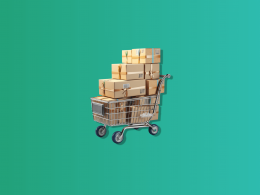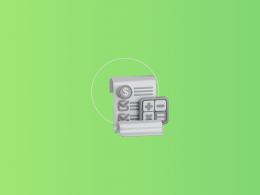For online sellers, fulfillment isn’t just about getting the product to the customer; it’s about the overall experience, the speed, the packaging, and the post-purchase support. It’s an integral part of your brand’s promise to its customers. Therefore, choosing the right fulfillment method becomes paramount. It can impact everything from your profit margins and scalability to customer satisfaction and brand reputation.
Among the array of fulfillment methods available, today we will compare 2 popular ones: Amazon FBA (Fulfillment by Amazon) and dropshipping. Both models come with their own set of advantages, challenges, and operational nuances. As a business owner navigating the ecommerce waters, understanding the intricacies of these models can guide you to make an informed decision—one that aligns with your business goals, financial capacity, and brand vision.
In this guide, we’ll delve into the world of Amazon FBA and dropshipping, equipping you with the knowledge you need to determine which model might be the right fit for your online business venture. Let’s embark on this journey together.
To streamline your ecommerce bookkeeping and accounting, venture into the world of Synder and learn how ecommerce tailored solutions can help your business.
What is Fulfillment by Amazon (Amazon FBA)
At its core, Amazon FBA is a service provided by Amazon where they take on the heavy lifting of storing, packaging and shipping your products to customers. As a seller, instead of managing inventory and handling shipments yourself, you send your products to Amazon’s fulfillment centers. Once a customer places an order, Amazon picks, packs, and ships the product on your behalf.
Key features of Amazon FBA
- Storage: Amazon houses your inventory in its vast network of fulfillment centers, ensuring products are ready to ship as soon as an order is placed.
- Packaging: No more worries about packing materials or presentation; Amazon ensures your products are securely packed and presentable when they reach your customer.
- Shipping: With Amazon’s established logistical network, products are shipped efficiently, often offering faster delivery times than many independent sellers could achieve.
- Customer service: Amazon handles customer inquiries, returns, and refunds related to the order, saving you time and ensuring a consistent customer experience.
Advantages of using Amazon FBA
If you’re looking for a fulfillment method that reduces hands-on involvement, offers fast shipping, and taps into a trusted brand’s infrastructure, Amazon FBA could be an excellent fit. It’s especially beneficial if you have the capital to invest in inventory upfront and wish to leverage Amazon’s massive customer base. However, always weigh these advantages against the fees associated with FBA and the potential loss of complete branding control.
As you contemplate your decision, remember that the ideal fulfillment model aligns with both your operational capabilities and your long-term business vision.
Let’s review some of the advantages of Amazon FBA.
Brand trust and credibility
When running an online store, associating with a titan like Amazon can be immensely advantageous. For many customers, purchasing from Amazon—a platform they’re familiar with and have often used in the past—provides a comforting sense of reliability. This brand recognition not only facilitates customer trust but can significantly boost your product’s credibility.
Amazon Prime eligibility and faster shipping
One of the standout features of products fulfilled by Amazon is their eligibility for Amazon Prime. For Prime members, this translates to the allure of two-day shipping. The promise of rapid delivery can often be a decisive factor for customers, making this a considerable advantage for sellers.
Streamlined return process
The ecommerce landscape, by its nature, comes with the territory of product returns. Navigating this aspect can be daunting for sellers, but with FBA, Amazon shoulders this responsibility. They ensure that the return process is smooth and hassle-free for both the seller and the buyer.
Access to Amazon’s customer base
The sheer volume of Amazon’s daily traffic is staggering. By opting for FBA, sellers gain a golden ticket to showcase their products to this vast sea of potential customers, encompassing diverse demographics and preferences.
Want to learn more? Find out how to increase sales on Amazon.
Understanding dropshipping for your ecommerce venture
Navigating the ecommerce landscape requires careful consideration of various business models to find one that fits your vision and operational capabilities. While Amazon FBA might offer a robust infrastructure, another model, dropshipping, offers its own unique advantages, especially for those keen on starting with minimal upfront investment. Let’s delve into this model and evaluate if it aligns with your business aspirations.
What is dropshipping?
Dropshipping is an ecommerce model where you, as the retailer, don’t keep products in stock. Instead, when a customer places an order, you purchase the item from a third party (usually a manufacturer or wholesaler) and have it shipped directly to the customer. Essentially, you act as a middleman, facilitating the sale but never handling the product yourself.
Key features of dropshipping
- No need to hold inventory: One of the significant hallmarks of dropshipping is the elimination of inventory requirements. You only purchase products when you have an order, eliminating the need for storage and inventory management.
- Direct shipment from supplier to customer: Once an order is placed, your supplier handles the packaging and shipping. Your primary role is to ensure the transaction goes smoothly and to provide customer service.
Advantages of dropshipping
Dropshipping might be the perfect gateway for budding entrepreneurs keen on entering the ecommerce sphere with minimal capital. It’s also a model that offers adaptability, allowing you to pivot based on market dynamics without significant losses. However, keep in mind that while dropshipping reduces some operational complexities, it also means relying heavily on third-party suppliers for timely and quality fulfillment – a factor that can impact your brand’s reputation.
Here are some of the advantages of the dropshipping method.
Low start-up costs
One of the standout advantages of dropshipping lies in its minimal initial financial barriers. Unlike many traditional ecommerce models that necessitate buying inventory in advance or investing in storage solutions, dropshipping keeps the entry threshold low. This accessibility means that entrepreneurs can venture into the online retail space without a hefty upfront expenditure.
Flexible product offering
The absence of inventory constraints in dropshipping serves as a double-edged sword of opportunity. On one hand, it empowers businesses to fluidly adapt their product range in tandem with evolving market trends and consumer demands. On the other, it offers a sandbox environment, enabling sellers to experiment with and assess multiple niches without the looming pressure of financial pitfalls.
Scalability and adaptability
The dropshipping model inherently outsources a significant chunk of logistical challenges to suppliers. This structure, while maintaining product diversity, streamlines the scaling process. As your venture garners more orders and grows, the primary facets that demand your attention shift towards bolstering customer service and fostering fruitful supplier relationships. This dynamic means that, instead of grappling with the complexities of inventory expansion, your focus remains anchored in enhancing customer experience and supplier coordination.
Reduced risks due to no inventory holding
In the traditional retail paradigm, a persistent shadow of risk is cast by concerns like unsold inventory, mounting storage expenses, and the impending dread of product obsolescence. The genius of dropshipping is its innate ability to sidestep these pitfalls. Aligning product orders with direct demand ensures that you’re never left holding the bag—be it stocked with unsold goods or associated costs. This strategic alignment not only optimizes cash flow but also minimizes potential losses.

Amazon FBA or dropshipping: Navigating your ecommerce decision
While both Amazon FBA and dropshipping aim to simplify the sales process for you, the business owner, they offer distinct experiences, benefits, and challenges. Let’s delve into their key differences to aid you in making an informed choice for your venture.
Inventory management
Amazon FBA: As an Amazon FBA seller, you’ll be sending your inventory to Amazon’s fulfillment centers. This means an initial investment in stock and costs associated with holding inventory as well as the potential risks of unsold products.
Dropshipping: The beauty of dropshipping is the elimination of inventory. You list products on your platform, and when orders come in, they’re sourced directly from third-party suppliers. This model removes the burdens of inventory costs and management from your shoulders.
Start-up costs
Amazon FBA: Starting with Amazon FBA requires a more substantial initial investment. You’ll need to buy inventory upfront and account for storage fees at Amazon’s warehouses. Additionally, there are FBA fees associated with fulfilling and shipping products.
Dropshipping: This model is financially less demanding to kickstart. With no inventory to purchase and no storage costs, your initial expenses are significantly lower. However, always factor in potential costs like platform fees or any premium plugins you might need to streamline the process.
Profit margins
Amazon FBA: While selling on Amazon can command higher prices, especially for Prime-eligible products, the fees associated with FBA, including storage and fulfillment, can eat into your profit margins.
Dropshipping: Typically, dropshipping operates on slimmer margins. This is due to reliance on third-party suppliers, where you might have less negotiating power on product costs, especially when starting out.
Control over brand management and packaging
Amazon FBA: Amazon prioritizes consistency. This means products shipped via FBA will be in Amazon-branded packaging, limiting your ability to offer a unique unboxing experience or branded touchpoints.
Dropshipping: The level of branding control in dropshipping varies. Some suppliers might allow custom packaging or inserts, giving you more flexibility in crafting a branded customer experience. However, this often depends on your relationship and agreements with the suppliers.
Handling customer returns and service
Amazon FBA: One less worry with Amazon FBA is that they manage returns and customer service related to shipments, ensuring a standardized process and saving you the associated hassles.
Dropshipping: In the dropshipping model, returns and customer service usually fall on your plate. Some suppliers might offer assistance, but overall, you’re the primary point of contact for customers, which can be both an opportunity and a challenge.
Interested in combining both approaches? Find out how to dropship on Amazon.
Amazon FBA and dropshipping: Pros and cons to guide your ecommerce journey
As we’ve shown, both Amazon FBA and dropshipping offer valuable pathways into ecommerce, but they cater to different needs and strategies. If you’re still unsure which model suits your business best, here, we allocated the above features, benefits, and challenges into pros and cons, so that you can easily compare them.
Amazon FBA pros
- Established trust: Leveraging Amazon’s reputation offers instant credibility. Customers are often more willing to buy from a platform they know and trust.
- Amazon’s customer base: By selling on Amazon, you gain access to its vast and diverse audience, multiplying your potential reach without massive marketing costs.
- Prime benefits: Being Prime-eligible can significantly boost sales. Many customers prefer and even filter for Prime products due to faster shipping benefits.
- Centralized return system: Amazon manages returns, ensuring a consistent and hassle-free process, which can be a considerable load off your shoulders.
Amazon FBA cons
- High competition: Amazon is a bustling marketplace, which means standing out among millions of sellers can be daunting.
- Storage fees: Keeping inventory in Amazon’s warehouses isn’t free. These costs, especially during peak seasons, can erode your profits.
- Potential long-term storage fees: Products that don’t move quickly can accrue additional fees, pushing you to either discount items or remove them from warehouses.
- Less branding control: With Amazon handling packaging and shipping, there’s limited scope for personal branding touches that set your products apart.
Dropshipping pros
- Low upfront cost: Without the need to invest in inventory or manage storage, the barriers to entry are relatively low.
- Wide product range: You can list and test a vast array of products without the commitment of purchasing them upfront.
- Scalability: As orders increase, there’s no direct correlation with operational complexity. Your primary tasks scale linearly with sales, making growth more manageable.
Dropshipping cons
- Lower profit margins: Due to dependence on third-party suppliers and the inability to buy in bulk, profit margins are typically slimmer.
- Potential shipping delays: Since you’re not in direct control of fulfillment, there can be unpredictability in shipping times, which might lead to customer dissatisfaction.
- Reliance on third-party suppliers: Your brand’s reputation is, in part, in the hands of your suppliers. A mistake or inconsistency on their end can reflect poorly on your business.
Amazon FBA vs dropshipping: Tailoring your choice based on business needs
Moving on to entrepreneurial spirits and strategies, we’ve mapped out which model might best serve different business scenarios.
New ecommerce business owners
As a newcomer to ecommerce, you might want a model with a gentler learning curve and minimal initial investment. Dropshipping offers this flexibility, allowing you to explore various niches, understand market dynamics, and build your brand without heavy upfront costs or the complexities of inventory management.
Established brands looking to expand
If you’ve already built a brand reputation and are looking to tap into a broader audience, Amazon FBA provides access to its vast customer base. With Amazon’s infrastructure at your disposal, you can focus on scaling and expanding, leveraging the benefits of Prime eligibility and the trust associated with Amazon’s platform.
Entrepreneurs with limited capital
Starting an ecommerce venture doesn’t have to break the bank. Dropshipping, with its low upfront costs, allows you to step into the retail space without hefty inventory investments. You can kickstart your business, refine your strategies, and gradually scale as revenues start flowing.
Sellers prioritizing branding and unique customer experience
If crafting a unique brand identity and customer experience is paramount, dropshipping provides more leeway than FBA. Through direct collaborations with suppliers, you can customize packaging, include branded inserts, or even offer specially curated product bundles. This level of customization allows your brand to stand out and cultivate a unique rapport with customers, something that’s harder to achieve with Amazon’s standardized packaging and processes.
Amazon FBA vs dropshipping: Key takeaways
As we’ve delved into the distinctive universes of Amazon FBA and dropshipping, it becomes evident that while both pathways offer enticing prospects, the ‘right’ choice isn’t one-size-fits-all but tailored to individual business contexts.
Amazon FBA harnesses the might of Amazon’s established platform, offering sellers access to a vast customer base, the trust associated with the Amazon brand, and the perks of Prime eligibility. However, it comes with its challenges, such as high competition, storage fees, and limited branding opportunities.
Dropshipping, on the other hand, is the embodiment of flexibility. It offers budding entrepreneurs a gateway into ecommerce without heavy capital requirements. The model’s adaptability allows for wide product experimentation and a more direct hand in crafting unique customer experiences. Yet, it’s not without its hurdles, like slimmer profit margins and potential shipping unpredictabilities.
At the heart of this decision lies the imperative of aligning your choice with your specific business goals and resources. Whether you’re an ecommerce novice looking to dip your toes or an established brand aiming to scale, the intersection of your current status and future vision will guide your choice.
However, a crucial reminder is that while the choice of fulfillment model is significant, it’s but one cog in the expansive machinery of ecommerce success. The most exceptional fulfillment strategy can falter without robust marketing, stellar customer service, and unwavering product quality. Your brand’s reputation, the trust you cultivate, and the value you consistently deliver play equally paramount roles in carving out your ecommerce success story.
As you stand at this crossroads, ponder not just the immediate benefits of Amazon FBA or dropshipping but the holistic picture of your business journey. Ecommerce isn’t just about transactions; it’s about building relationships, understanding market dynamics, and persistently refining your strategies. Whichever path you choose, may it be but the first step in a journey filled with learning, growth, and boundless success.
Read our comparison Square vs Squarespace and learn more about eCommerce!

.png)




